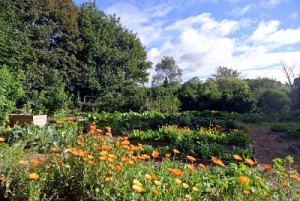 When you sit down for your next meal try to imagine you are eating oil. Its a fairly disgusting thought, but that is literally what you are doing. We tend not to think about how much energy is used in growing, transporting and storing food. A helpful start is think about how much it takes grow a hectare of wheat. Data provided by the Institute of Mechanical Engineers suggests it takes on average 22566MJ of energy in total. Just 6MJ of this is due to human effort (presumably operating the tractor). To put it into perspective, for every calorie you eat, it takes an average of 8 calories of energy to get it into your mouth. Much more than that if its meat.
When you sit down for your next meal try to imagine you are eating oil. Its a fairly disgusting thought, but that is literally what you are doing. We tend not to think about how much energy is used in growing, transporting and storing food. A helpful start is think about how much it takes grow a hectare of wheat. Data provided by the Institute of Mechanical Engineers suggests it takes on average 22566MJ of energy in total. Just 6MJ of this is due to human effort (presumably operating the tractor). To put it into perspective, for every calorie you eat, it takes an average of 8 calories of energy to get it into your mouth. Much more than that if its meat.
There are two main reasons for this. When my grandparents were young, before the first world war, the great majority of the food they ate was local and seasonal. Nowadays the food we buy can come from anywhere any time. Seasonal, forget it. About the only thing I can think of that’s still seasonal is sprouts! These very long supply lines often from different continents, rely on vast amounts of cheap energy and that’s just for the transport. There is also another issue that has links to just before the first world war. Returning to our field of wheat, the fertilizer used to grow our wheat takes 10,651MJ/Ha, almost half the energy required. Fertilizers are not solely composed of nitrogen, but its the most important element within them. Why is this?
Nitrogen is a vital component of amino-acids which form the building blocks of proteins, its also used to make the nucleotide bases used in DNA and RNA. There’s plenty of it around, the atmosphere is nearly 80% nitrogen. There’s a problem though. Nitrogen does not like being alone. It bonds very happily with other atoms such as oxygen or hydrogen to form compounds, but not as happily as to itself. Nitrogen in the atmosphere is a gas formed of two nitrogen atoms bound together by a very strong triple bond. Nitrogen gas is therefore very inert, stable and not bioavailable. This takes a lot of energy to break nitrogen the compound into individual nitrogen atoms, giving them a chance to combine with something else. In nature lightening can do it, the nitrogen combining with either one or two oxygen atoms. The resulting nitrogen oxides dissolve in rain water to form weak nitrous acids. These end up in the soil where plants can acquire the nitrogen. Another route for nitrogen to enter plants and the soil is via bacteria. Some bacteria can use enzymes to break the triple bond. Leguminous plants have evolved to be able use bacteria to “fix” nitrogen in forms they can utilise. You might ask why over millions of years all the nitrogen has not ended up in plants and the soil? The reason being other bacteria convert nitrates back to nitrogen gas.
Till the 1840’s crop rotation using legumes and rain were the main sources of nitrogen fertilizers for plants. Then mineral nitrates and guano (mineralised bird poo) came on the scene. These were finite. Just as it looked like there could be a food crisis in 1909 Haber and Bosch invented the Haber process. This as you will remember from school chemistry lessons uses lots of heat, pressure and an iron catalyst to break the triple bond combining hydrogen and nitrogen to make ammonia. Ammonia when combined with nitrates are forms of nitrogen that plants can easily assimilate. Crisis solved, loads of nitrogen and lots of food for everyone. There’s a problem however and its energy again. The Haber process is reliant on fossil fuels both for the hydrogen and the heat to drive the process. So much so that an astonishing 3-5% of the worlds natural gas alone is used to make fertilizer.
Our current food system has given us much that is good, we have more food than ever before and more choice of what to eat. It also given us ecological damage and an obesity crisis. Our reliance on oil and gas make us vulnerable when they start to deplete. We are in the foothills of this now. Since 2000 the percentage income we spend on food has doubled.
So what are we to do? GM crops obviously won’t totally break the link with oil. The solutions lie in growing as much food as close to us as we can, organically. Even in the middle of cities. Also using a diversified agriculture with rotation using legumes, rather than monoculture. By eating less meat and less food in general. Can it be done? The experience of Cuba suggests its possible. After the break up of the USSR they lost their cheap oil and survived by doing the above.
Neil
This post is being entered for a science writing prize (very speculatively), more info on the link between oil and food can be found in our book.
